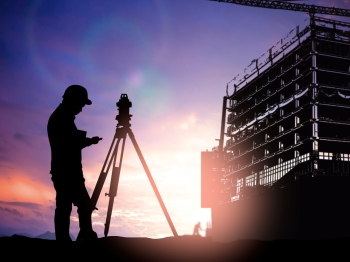Development of the Open City in Public Spaces
Info: 8525 words (34 pages) Dissertation
Published: 9th Dec 2019
“Reclaiming city streets and public spaces for people”
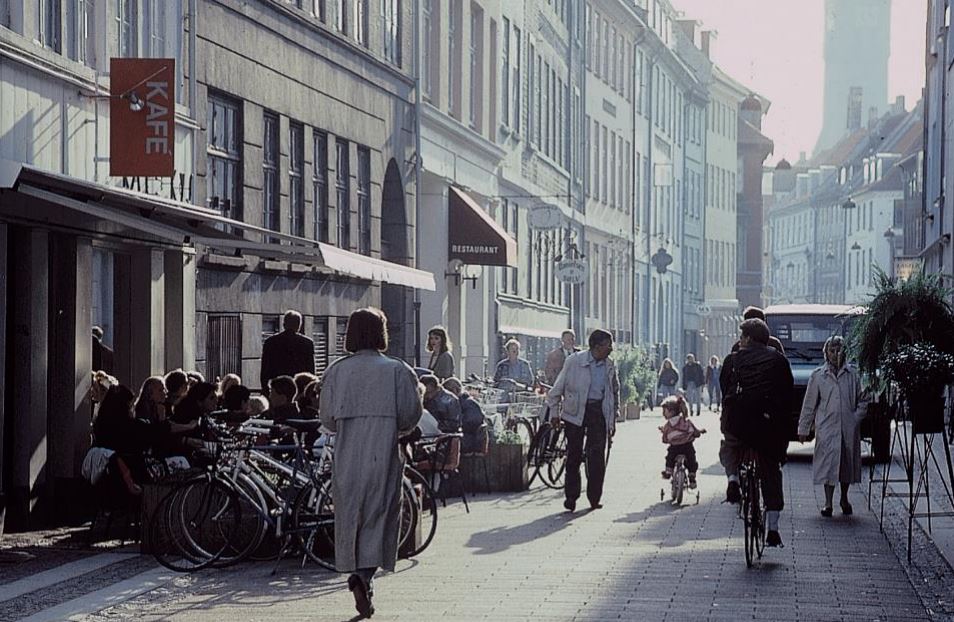
Abstract
Public spaces matter much more than either individual buildings or vehicular traffic. All often cities simply continually and re-adapt to accommodating more and more traffic and bigger and bigger buildings. Creating a lively and enjoyable public spaces is a key to planning a great city. Thus, in designing and developing buildings and environment which interrelate with the public spaces, it is important to ensure that this tremendous value of the public spaces to the wider community is acknowledged, respected and enhanced. Jan Gehl has been a major influenced on the development and changes of streets design and public spaces all around the world, He restricted the movements of vehicles and encourage more walking and cycling. Meanwhile, in the city that I lived, Kuala Lumpur city center has been occupied with heavy traffic and less usage of public transport, walking and cycling. Therefore, this essay is indented to discuss and analyze the importance of public space and a key factors towards a successful development of Copenhagen’s city for over the past 34 years and conclude the guideline for making attractive public space in current situation of Kuala Lumpur city Centre. It puts forward to new approaches in developing a lively and enjoyable public spaces to enhance the social and physical aspects for its users.
Content
- Introduction
2. Addressing the needs of public space
2.1 – The function of public space
2.2 – The importance of public space
- Brief background of public spaces and street in Copenhagen
4. The transformation of the streets from car oriented city
4.1 – City life after traffic
4.2 – Safety of walking in public space
5. Creating an attractive public space
5.1 – Public space for walking, meeting and self-expressions
5.2 – Making improvements in public space
6. Final
Recommendations and reflections
1. Introduction
Public spaces can be defined as a social space that is accessible at any time of day and used by all kinds of users. Generally, when one thinks of a public space, it is assumed to be a park, a city squares, etc. This is where the question of what exactly a public space is arises. A public space doesn’t certainly only mean a garden or typical square but can also be spaces of everyday use such as sidewalks, waterfronts, streets and subway platforms to spaces such as a public library. Although these public spaces served different functions, but each one are integrated under the common concept of living public space. Lang defines a “Public space certainly has physical and functional characteristics that affect social activities, comfort and safety which engage people to the space”(Lang, 19494). 1 As part of this thought, we know that public space are an important asset to a cities and play an important roles in social interaction and create meeting places for different social groups. Madanipour also stated that public space, “they have the ability to promote sense of belonging and local identity “(Madanipour, 2003).2 People need to walk or stay in the public space simply because of their homes lack of outdoor spaces and cramped homes. In other words, they had no choice besides going to the public space to spend their time and enjoy surroundings. Public spaces also have the ability for people to be themselves and express themselves fully. Also, this might involve meeting new people and make contact with each other, reunite with old friends, and participating in street activities in the space or interacting with the public art. The city may become more attractive as human activities increase in public spaces. Besides, even if at a low level but through the activities of hearing or seeing others makes the spatial experiences much better rather than only through experiencing the buildings themselves. Moreover, creating attractive public activities makes people find it easier to gather and this interrelated to what Jacobs once described such situations as “Nobody enjoys sitting on a stoop or looking out a window at an empty street. Almost nobody does such a thing. Large numbers of people entertain themselves, off and on, by watching street activity”(Jacobs, 1989)3 As part of this thought, it is true that other people present can grab people’s attention and almost everyone has the similar experience and they prefer to walk in a lovely street compared sitting in a private garden.
However in the recent years, the approach towards public space has slowly changed reviving their importance as an integral part of urban identity of cities. For instance, few cities especially European cities like Barcelona and Copenhagen having successful urban regeneration strategies act as objectives in encouraging other cities across the world to redefine the quality of their public spaces and the importance of public spaces is universally accepted by one and all. Jan Gehl has successfully transformed the city of Copenhagen from a car oriented city to a people oriented city to improve the conditions and comfort of users, and step by step become more attractive and beautiful city. As shown in image A. Købmagergade Street was pedestrianized in 1973 and the space was transformed from car park traffic into car-free square and become the second most important shopping street in the city. This outstanding increase in the interest towards public spaces is a stepping stone towards improving the quality of the public life of people.
____________________
1 Lang, J. (1994). Urban Design: The American experience. New York, Van Nostrand Reinhold Co.
2 Madanipour, A. (2003). Public and Private Spaces of the City. London, Routledge.
3 Jacobs, J. (1989). The Death and Life of Great American Cities. Random House.
The situation in Copenhagen city is different from the city that I lived, where Kuala Lumpur is a city centre with high density development, extreme traffic congestion and busy streets that make it almost impossible to have a comfort in driving and walking around the city. Personally, I feel unsafe and uncomfortable walking on the city streets as the physical safety of the walkways affects the well-being. The situation show below in Image B. illustrate the amount of vehicles controlled the surrounding environment in the Bukit Bintang area where bigger road are provided and the walkway of pedestrians become narrow, dangerous in crossing the road and unpleasant to walk in such environemt with crowded people and heavy traffic. It is important to address the issue of pedestrian’s safety and comfort walking in public space and streets in Kuala Lumpur city center for people to experience the city on foot with comfort and ease. Therefore, this essay will explore a transformation of the streets from car oriented city in Copenhagen and life after traffic in Kuala Lumpur, then conclude in providing safety and comfort of walking in streets and public spaces and a guideline for making further improvement of well-being in public spaces.
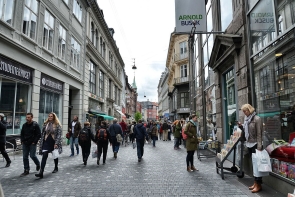
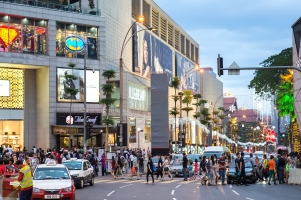
Image A: A shopping street in Bukit Bintang that always crowded and heavy traffic.
Source: 3
Image B: Købmagergade Street was pedestrianized in 1973 as the third link in the pedestrian network.
Source: Gehl & Gemzøe, 2004
2. Addressing the needs of public space
2. 1. The function of public space
People are likely to stay connected with the public life of their towns and cities. Generally, public spaces enable people of all ages to socialize and they are drawn or tend to stay longer in public spaces that offer interest and comfort. All often people need a certain main condition either going to a different places or being in the same place.This is where the question often arises, if there is lack of place or public space, where can they go or see, meeting and hear others? Gehl and Gemzöe (2003) has argued that “the public space is traditionally used as a market place, traffic space and meeting place in balance, in spite of the different usage patterns of the city”. 4
_____________________
4 Gehl, J, Life Between Buildings, Using Public Space. The Danish Architectural Press, 2001.
A A shopping street in Bukit Bintang that always crowded and heavy traffic. Jalan Bukit BIntang, Kuala Lumpur. (Asia Web Direct, 2018)< http://www.kuala-lumpur.ws/klareas/jalan-bukit-bintang.htm>
B Købmagergade Street was pedestrianized in 1973 as the third link in the pedestrian network. (Gehl, J and Gemzøe, L, 2004)
To support the argument, people and human activity are the utmost entity of interest and attention. As shown below in Image C. the situation illustrate how the goods are sold at an open market space and changed the street life. In addition, a lot of activities, celebration, festivals and coronations occurred in public spaces. In the early of the 20th century, after the Second World War, the usage of cars started to increased and result in heavy traffic and a lot of spaces are transformed into car parking area. The balance usage of traffic road as market place and meeting area for public are no longer existed and has been destroyed as the cars took over the street. As part of this transformation, the increase of usage in television, mobile phone, computers and internet had big impact on people’s daily life, distracting people from going and participating in activities in the public realm. In the same argument, personally I think people will choose to go out for walk still, and spend their time in public space simply because the space are attractive and they love to go there. If it’s not interesting, people would decide not go anywhere else or just stay at home. Indeed, it is important to ensure the quality of public space in order to attract people to engage with outdoor activities in public spaces.

Image C: How the goods are sold at an open market space and changed the street life. Source: Gehl J, 2001)
At the same time, most of people are likely to linger and go around somewhere comfortable for them to sit, especially if the spaces have protection from the weather. However, in daily life of a city, where people are likely pause to greet strangers, where people live their lives in the existence of everyday interaction with others and where adults look out for the children of others. Meanwhile, a traditional city are usually exposed by the formations of elevated roads, shopping malls and also by the destruction of open markets in between tall office buildings and luxury apartments, where public gardens, parks and square and plazas are the most part that can be found only in city centre, and while those living further away from city have only few public places to go for a little rest, exercise, recreation and socializing.
_____________________
4 Gehl, J, Life Between Buildings, Using Public Space. The Danish Architectural Press, 2001.
C How the goods are sold at an open market space and changed the street life. (Gehl, J and Gemzøe, L, 2003)
As I mentioned above, before the Second World War and huge changes occurred during last two decades in cities around the world, children are used to play in the streets and sidewalks and walk to school, in other words they have more freedom to play on street with neighbour and sit along the edges of their house. Later on, transportations like cars and motorcycle have made people more convenient in some ways, but the truth is it have brought in a host of new problems including air pollution and noise, reduced the pedestrian streets, reduced an independent movement for elderly and children, and people have been go through endlessly transitions and its residents have been trying to adjust their new and too often discordant of new environments. These changes of a cities is part of the progress and improvements in livelihood and environment which allow the economy to grow. According to the Michael Douglass, “there are two main competing models of cities which coincide with the two main theories of economics: one focused on economic growth and the other on meeting basic needs within the context of limited natural resources, on preserving small businesses and the environment, not promoting growth”( Douglass, 2009).5 In the modernization view, parks and plazas represent a waste of space that could be utilized for economic purposes, and the shopping malls replaces open markets in order to increase the consumptions. In the same thought argument, Peñalosa explain a”Shopping malls can be fun places… But when malls begin to replace public spaces as a meeting place for the community, for people in a city, it is a symptom that a city is ill and perhaps society as well” (Peñalosa, 2004).6 Indeed, the quality and socialization life, those open public spaces are seen as very important for people’s interactions, health and well-being. Many of modern city has fails to address the basic physical needs of many people such as, to be around, to watch and to interact with other at different levels of understanding, in order to feel part of a community and sustenance a human connections. The mix of people is the key of understanding the vitality of public spaces and it reminds how important people to look out for each other and gain more understanding and tolerance between communities and people to enhance the quality of daily life.
2.2. The importance of public space
Why is it important to ensure that people are happy to be in public spaces? Simply because it affects nearly every aspects of our lives and our choices and decisions about the design and environment of our cities. The questions often arises in between whether we should focus on making every corner of the city accessible by transportation, providing a lot more stores like shopping malls and luxury shop, expensive restaurants and hotels or do we need to work in sustaining and straightening existing neighbourhoods and communities to ensure that all vendors and small kiosk or shop have a place to keep their ongoing business and people of all ages have an attractive of outdoor public space to gather, thus, these are the greatest hope for all of people and community in cities as they promote the socializing and sustain livelihood. And that is precisely described what is happening in countless cities today.
_____________________
5 Douglass, M, “Livable Cities: Conviviality Versus NeoDevelopmentalism in Pacific Asia’s Urban Future”. Presentation at International Conference on Hanoi – A Liveable City for All, Hanoi, 1-2 July 2009.
6 Peñalosa, E, Speech at International Mayors’ Forum, 10-11 November 2004.
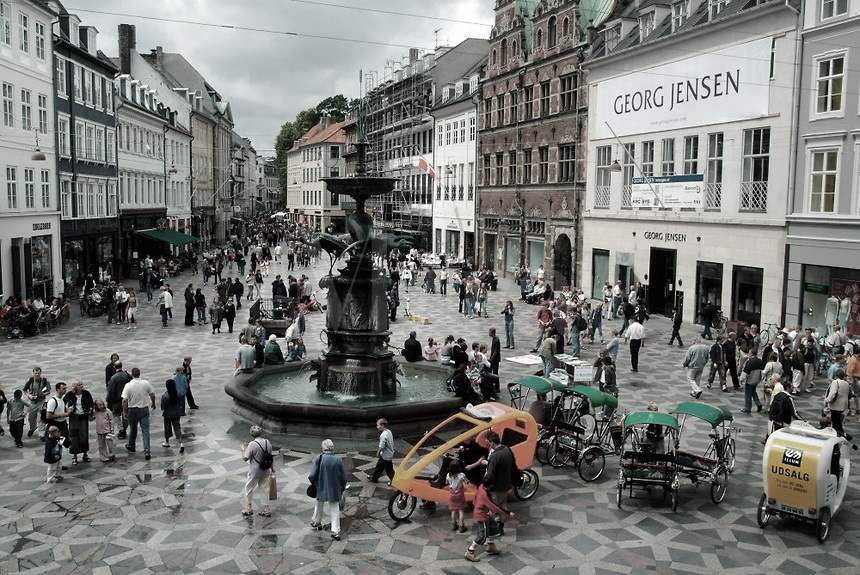
Image D: Copenhagen’s main street, Strøget was pedestrianised on 17 November 1962. Source: Gehl & Gemzøe, 2004
_____________________
D Copenhagen’s main street, Strøget was pedestrianised on 17 November 1962 (Gehl, J and Gemzøe, L, 2004, p.17
3. Background of public spaces and street in Copenhagen
As written in the book “Public Space Public Life” by Jan Gehl and Lars Gemzöe, Copenhagen is a city with a vision up until 1962, whereby all the streets in the old medieval city were filled with cars and all the squares were used as car park area. The conditions for pedestrians were rapidly deteriorating as the car traffic increased. However, the city’s main street, Ströget Street was pedestrianized in 1962 and became the first pedestrian street with a width of 11 meters in Copenhagen. The conversion gave rise to most of public debate, people argued that a pedestrian street in Denmark would never work. “Although scepticism was high, the new car free environment proved extremely popular with local residents from the first day” (Gehl, J and Gemzøe, L, 2004). 9 Thus, this marked the beginning of a transition from congested traffic environment into a lively yet vibrant city centre that attracts visitors throughout the year. Today, Copenhagen’s city has over 96 000 m2 (of which 33 % is street and 67 % city squares) of car-free space. The pedestrian traffic levels remained mainly unchanged over past decades, and people find it easy to walk around in Copenhagen from one end to the other end of the city. The process of reducing car traffics and reclaiming streets and squares for pedestrians was done regularly in order to give more time for people to change their current pattern of driving and parking into patterns of using public transportation and cycling. However, the on-going pace of the transformation has given Danes the opportunity to figure out what kind of attractive public spaces can play in today’s society. Strøget Street has proved to be a huge success as a pedestrian street, in both commercial and popular terms. Moreover, a well-integrated network of pedestrian streets was developed and offering a proper coherent network for pedestrians. During the summer, there are many of pedestrian streets with full of people enjoying the outdoor cultural and social activities. Meanwhile, during the winter, the attractions are more towards the festivals and outdoor ice skating.
Copenhagen has become of one of the finest city as many of the street closed to traffic and car park area, transformed into square and Pedestrian Street. Gammeltorv and Nytorv are one of the major city squares that are popular and well used square that serves “…various functions during the rest of the year, for example it provides a welcome breathing space, an oasis of quiet in a bustling, crowded city center”. 10 There are more conversion of streets and squares followed in the following years.  City squares in Copenhagen are attractive and strongly reflected in the way the city is used. It is also makes the city more popular and loved by its user. The outdoor cafes are the obvious reasons the squares continues to be much loved place as well as fine stage performances, city events and concerts.
City squares in Copenhagen are attractive and strongly reflected in the way the city is used. It is also makes the city more popular and loved by its user. The outdoor cafes are the obvious reasons the squares continues to be much loved place as well as fine stage performances, city events and concerts.
_____________________
9, 10 Gehl, J and Gemzøe, L, Public Spaces – Public Life, Copenhagen. (The Danish Architectural Press & The Royal Danish Academy of Fine Arts School of Architecture Publishers, Copenhagen, 2004). Pp 11 & pp 16.
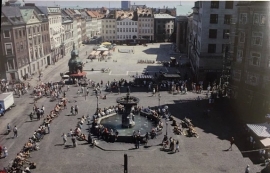
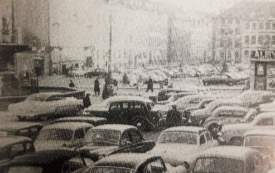
Image E: In 1962, Gammeltorv and Nytorv served as parking.
Source:Gehl, J and Gemzøe, L, 2004
Image F: Both Gammeltorv and Nytorv become a well-used square for pedetrians in 1973.
Source: Gehl, J and Gemzøe, L, 2004
4. The transformation of the streets from car oriented city
4.1 City life after traffic
As soon as the economy’s growth, the traffic becomes worse and unlikely improved. This is a proof where in many cities all around the world have made in transition from walking and cycling to cars and motorbikes. The surrounding area become worse from the air pollution, noise from the vehicles, the streets and public spaces become unsafe and dangerous for pedestrian to move and cross. Traffic give a lot of impacts towards society especially to young children and adults, they will feel unsafe and it is too dangerous to be in public spaces that are overcrowded area and busy with traffic. The capability of sidewalks or outdoor cafes, of sitting areas, of market and entertaining area on sidewalks is exposed by traffic, as pedestrians sidewalks are taken over for car park area and the unpleasantness conditions of the streets destroys the ambience of the environment surroundings. There are only two possibilities to encounter the problem of traffics which are the limitation in traffic to allow urban life to grow or allow traffic to control urban life. A few questions arises from this current situations which are is a cities lack of public spaces and streets or there are too many vehicles? Or can the society depending on public transportation only in order to restrict people from using cars and motorbikes? Are those using cars and motorbikes are more important than the safety and well-being of young children and adults? Cities like Copenhagen is one of the cities with the high ranked in wealthy and liveability, but still choose to reduce most of traffics and transforms the city from car oriented city into people oriented city centre. As shown in Image G. Sankt Hans Torv in Copenhagen, was developed in 1993 from a small tired place with traffic to a lively safer street with outdoor cafes, festivals and so on. Even though it was once argued with Danes, he thought that the space will never work, indeed it is now a well transformed into a lively public spaces that can be found in the city center and also residential area. Meanwhile, a certain cities that can invest a lot of money to increase the urban transportation without making any effort to improve the current conditions, unfortunately they let the situations become worse. For instance, one of the streets in Kuala Lumpur, Bukit Bintang is a city that keeps allowing and increasing the use of excessive vehicles along the road. Image H shown the environment of the city with busy traffic that can cause pollution and discomfort towards pedestrian.
_____________________
E In 1962, Gammeltorv and Nytorv served as parking. (Gehl, J and Gemzøe, L, 2004, p.16)
F Both Gammeltorv and Nytorv become a well-used square for pedetrians in 1973 (Gehl, J and Gemzøe, L, 2004, p.16)
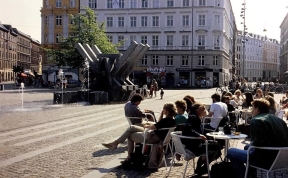
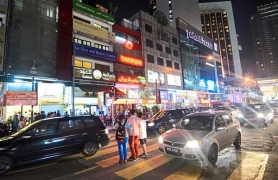 The less use of public transport, cycling and walking makes the problems even worse as the vehicles makes the area more polluted, more dangerous and congested. From my personal experienced, walking along the street makes me feel exhausted and anxious most of the time, there are too many people at one time and the traffic is really bad during peak hours. I do feel the street should be preserves or improved as it is a heart of the city in Kuala Lumpur which makes the cities more liveable and attractive. A part of improving the movement of traffic congestions, it makes the other opponent like cyclist, pedestrian and public transit be able to move fairly. One can make a cities even safer, friendlier, less polluted, quieter, healthier and livelier, and more dynamic communities by reduce or sacrifices from using vehicles. In a certain public spaces with overcrowding people, pedestrians and cyclist would be much happier and feels safe to use and access the roads and streets again if the traffic were converted into pedestrian sidewalks. Instead of just going to the parks, public gardens or even lakes, people could easily just meet and socialize with people through walks along safe sidewalks and streets, cyclist also could enjoy the lively street without the stress and danger from car traffic. Cycling and walking could make people be more healthier as they can exercise almost every day by walking and without worrying on too much of air pollution as the traffic reduce. As part of this thought, Jan Gehl describes that “…walking is more than a form of transport. It means exercise, fresh air and the chance to promenade. Walking can be fun. Walking allows time to look around at the surroundings, people, shop windows, and events. Walking also lets people stop, change direction, and experience things. It is a flexible way to move about the city, and it appeals to all the senses. Walking combines all these qualities and options: Transport, exercise, experience and pleasure” (Gehl, J and Gemzøe, L, 2004).12 Based on what he thought, it can be conclude that sometimes people need to sacrifices certain things in order to appreciate the other benefits, for instance to reduce the road for the cars traffic and encourage more people to walk or cycling in order to gained more self-experience and enjoy a cities better.
The less use of public transport, cycling and walking makes the problems even worse as the vehicles makes the area more polluted, more dangerous and congested. From my personal experienced, walking along the street makes me feel exhausted and anxious most of the time, there are too many people at one time and the traffic is really bad during peak hours. I do feel the street should be preserves or improved as it is a heart of the city in Kuala Lumpur which makes the cities more liveable and attractive. A part of improving the movement of traffic congestions, it makes the other opponent like cyclist, pedestrian and public transit be able to move fairly. One can make a cities even safer, friendlier, less polluted, quieter, healthier and livelier, and more dynamic communities by reduce or sacrifices from using vehicles. In a certain public spaces with overcrowding people, pedestrians and cyclist would be much happier and feels safe to use and access the roads and streets again if the traffic were converted into pedestrian sidewalks. Instead of just going to the parks, public gardens or even lakes, people could easily just meet and socialize with people through walks along safe sidewalks and streets, cyclist also could enjoy the lively street without the stress and danger from car traffic. Cycling and walking could make people be more healthier as they can exercise almost every day by walking and without worrying on too much of air pollution as the traffic reduce. As part of this thought, Jan Gehl describes that “…walking is more than a form of transport. It means exercise, fresh air and the chance to promenade. Walking can be fun. Walking allows time to look around at the surroundings, people, shop windows, and events. Walking also lets people stop, change direction, and experience things. It is a flexible way to move about the city, and it appeals to all the senses. Walking combines all these qualities and options: Transport, exercise, experience and pleasure” (Gehl, J and Gemzøe, L, 2004).12 Based on what he thought, it can be conclude that sometimes people need to sacrifices certain things in order to appreciate the other benefits, for instance to reduce the road for the cars traffic and encourage more people to walk or cycling in order to gained more self-experience and enjoy a cities better.
Image G: Sankt Hans Torv in Copenhagen, was developed in 1993 from a small tired place with traffic to a lively safer street with outdoor cafes, festivals.
Source: Gehl, J and Gemzøe, L 2004.
Image H: Bukit Bintang Street in Kuala Lumpur, crowded with people and traffic in the evening.
Source: https://www.thestar.com.my/metro/focus/2015/12/19/the-street-that-never-sleeps-jalan-bukit-bintang-offers-city-folk-and-tourists-much-entertainment-w/>
_____________________
12 Gehl, J and Gemzøe, L, Public Spaces – Public Life, Copenhagen. (The Danish Architectural Press & The Royal Danish Academy of Fine Arts School of Architecture Publishers, Copenhagen, 2004). Pp 51.
G Sankt Hans Torv in Copenhagen, was developed in 1993 from a small tired place with traffic to a lively safer street with outdoor cafes, festivals. (Gehl, J and Gemzøe, L, 2004, p.45)
H Bukit Bintang Street in congested with traffic and unsafe for people crossing road and not lack of sufficient width of sidewalks, Jalan Bukit Bintang the street that never sleeps (Lim, J, 2015) < https://www.thestar.com.my/metro/focus/2015/12/19/the-street-that-never-sleeps-jalan-bukit-bintang-offers-city-folk-and-tourists-much-entertainment-w/>
4.2 Safety of walking in public space
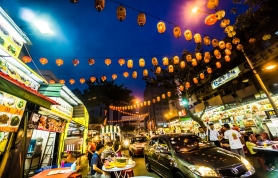
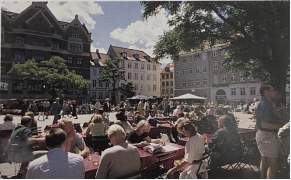 People tend to get fear of danger walking around the cities that they feel unsafe. Those danger could be from crime and traffic. Nowadays, the streets conditions with overcrowded people are difficult to cross on foot especially for the young children and elderly with disabilities when they have to rely on others to help them across the road or they are being ignored. Public streets have less security compared to streets that have less people that only can be found in village. Jane Jacob defined a characteristic of a streets as “A well-used city street is apt to be a safe street. A deserted city street is apt to be unsafe. … there must be eyes upon the street…. the sidewalk must have users on it fairly continuously” (Jacobs, J. 1989). 13 As discussed earlier about traffic, once we take over the streets, we should take care or control the conditions and environments for people to feel safe walking on the streets, crossing the road and sidewalks. Furthermore, the crime also can be reduced by ensuring the streets is liveable and lively. This is to allow more streets life to grow and embellish rather than trying to restraint or ban the markets or any outdoor cafes. Image G. shown below, Kultorvet square in Copenhagen constitute one space for people to run their business with providing a space for stalls, kiosk, pavilion and outdoor cafes. Besides the square also a place for people contact with passer-by through activities like street music and street performance. This keeps the public space lively and safer to go by all types of users. Different situation happened in Alor Street Kuala Lumpur, as shown in image I. below, a pedestrian street with bustling activities that provide a large dining area along the road with variety of stalls offering a diverse choice of local Malaysian cuisine. It is one of the famous food streets and became an attraction place for local and tourist, however, the streets is lack of safety and cleanliness. The streets are not totally closed for dining area, vehicles keep moving in and out of the streets which cause discomfort and lack of pedestrian safety. The gaps in between the outdoor dining area and vehicles are too close to each other and what makes it even worst, there is no barrier to avoid or protect people from the risk of getting hit by a car. I have been to this place for a couple of times just because of the great food they sold and I planned to go there more often if the road is entirely closed for the food streets, it will be more pleasant to let the streets car free so people could enjoy their food and walk along the streets with ease.
People tend to get fear of danger walking around the cities that they feel unsafe. Those danger could be from crime and traffic. Nowadays, the streets conditions with overcrowded people are difficult to cross on foot especially for the young children and elderly with disabilities when they have to rely on others to help them across the road or they are being ignored. Public streets have less security compared to streets that have less people that only can be found in village. Jane Jacob defined a characteristic of a streets as “A well-used city street is apt to be a safe street. A deserted city street is apt to be unsafe. … there must be eyes upon the street…. the sidewalk must have users on it fairly continuously” (Jacobs, J. 1989). 13 As discussed earlier about traffic, once we take over the streets, we should take care or control the conditions and environments for people to feel safe walking on the streets, crossing the road and sidewalks. Furthermore, the crime also can be reduced by ensuring the streets is liveable and lively. This is to allow more streets life to grow and embellish rather than trying to restraint or ban the markets or any outdoor cafes. Image G. shown below, Kultorvet square in Copenhagen constitute one space for people to run their business with providing a space for stalls, kiosk, pavilion and outdoor cafes. Besides the square also a place for people contact with passer-by through activities like street music and street performance. This keeps the public space lively and safer to go by all types of users. Different situation happened in Alor Street Kuala Lumpur, as shown in image I. below, a pedestrian street with bustling activities that provide a large dining area along the road with variety of stalls offering a diverse choice of local Malaysian cuisine. It is one of the famous food streets and became an attraction place for local and tourist, however, the streets is lack of safety and cleanliness. The streets are not totally closed for dining area, vehicles keep moving in and out of the streets which cause discomfort and lack of pedestrian safety. The gaps in between the outdoor dining area and vehicles are too close to each other and what makes it even worst, there is no barrier to avoid or protect people from the risk of getting hit by a car. I have been to this place for a couple of times just because of the great food they sold and I planned to go there more often if the road is entirely closed for the food streets, it will be more pleasant to let the streets car free so people could enjoy their food and walk along the streets with ease.
Image J: Bustling night life in Alor Street, Kuala Lumpur.
A famous street food area for local and tourist.
Source:http://kosublog.com/en/malaysia-brunei-day2-3-1509/
Image I: Kultorvet squares has many stalls, kiosk and a number of outdoor cafes in 1990’s.
Source: Gehl, J and Gemzøe, L 2004.
_____________________
13 Jacobs, J. (1989). The Death and Life of Great American Cities. Random House.
I Kultorvet squares has many stalls, kioks and a number of outdoor cafes in 1990’s. (Gehl, J and Gemzøe, L, 2004, p.19
J Bustling night life in Alor Street, Kuala Lumpur. A famous street food area for local and tourist. Bukit Bintang and Jalan Alor food street.(Kosu, 2015) <http://kosublog.com/en/malaysia-brunei-day2-3-1509//>
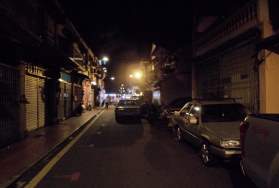 The other key factors of safety and comfort walking in public space or streets is provide adequate street lights to make people feel comfortable to walk around the city streets or public space during evening and night time. As shown in image L below, Stroget in Copenhagen, the light from shop windows, make the street interesting and friendly at night. The ground floor facades are very important features to make the streets more interesting and safer to walk through. It is also makes the city more vibrant and lively in the evening and night time with the good distribution of light functions provided along the streets for a friendlier and safer city center. Meanwhile, Jonker Street in Melaka, are not friendly during night time as they leave the entire streets as a dark when all the shop are closed. This statements of conditions that makes the city more vibrant and feel safe to walk through, exciting to look at, to feels, to be able to touch and to stand next to within the surroundings environments. Vendors and shops along the streets also is play an important role to make interested to go to a place and feel safe.
The other key factors of safety and comfort walking in public space or streets is provide adequate street lights to make people feel comfortable to walk around the city streets or public space during evening and night time. As shown in image L below, Stroget in Copenhagen, the light from shop windows, make the street interesting and friendly at night. The ground floor facades are very important features to make the streets more interesting and safer to walk through. It is also makes the city more vibrant and lively in the evening and night time with the good distribution of light functions provided along the streets for a friendlier and safer city center. Meanwhile, Jonker Street in Melaka, are not friendly during night time as they leave the entire streets as a dark when all the shop are closed. This statements of conditions that makes the city more vibrant and feel safe to walk through, exciting to look at, to feels, to be able to touch and to stand next to within the surroundings environments. Vendors and shops along the streets also is play an important role to make interested to go to a place and feel safe.
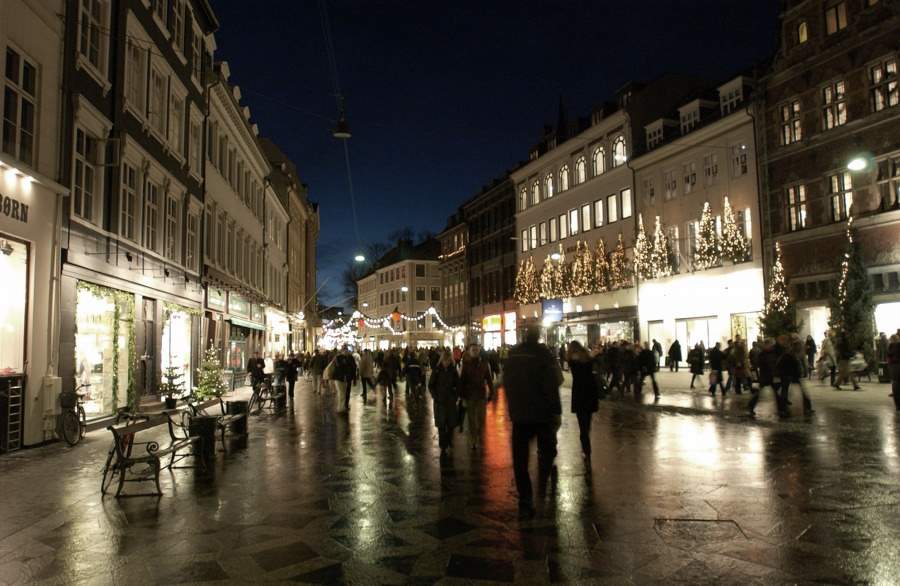
Image L: Jonker’s street in Melaka, all shop have been closed up at night, but leaving the entire streets as a dark.
Source: http://stephentravelteach.blogspot.co.uk/2015/07/melaka-jonkers-street-night-market.html
Image K: Stroget in Copenhagen, the light from shop windows, make the street interesting and friendly at night.
Source: Gehl, J and Gemzøe, L 2004.
_____________________
K Stroget in Copenhagen, the light from shop windows, make the street interesting and friendly at night, Merry Chritsmas(John, 2002) < https://www.askbjoernhansen.com/2002/12/24/merry_christmas.html>
L Jonker’s street in Melaka, all shop have been closed up at night, but leaving the entire streets as a dark, Melaka:Jonker’s street night market, (Pritchett,S 2015) http://stephentravelteach.blogspot.co.uk/2015/07/melaka-jonkers-street-night-market.html
5. Creating an attractive public space
5.1 Public space for walking, meeting and self-expressions
One can offer a basic guidelines and principles in creating and design attractive public space. Each different types of spaces will meet different needs, and different society have different needs and preferences. Jan Gehl, who guided mayors in cities all around the world, has carefully listed down the concern in detailing and designing the quality of public spaces under three main categories: comfort, enjoyment, and protections. There is six issues addresses under comfort, which are 1. Potentials for walking (street layout, freedom from difficulties, room, and good surfaces), 2. Potentials for staying/standing ( attractive edges of small units or shelter within the facade and many doors) this is defined for spots and support for staying, by means that if there is limited benches provided for people to sit or lean), 3. Potentials to see (a capability to see into the distance and unobstructed views by buildings or other barriers, suitable lighting, and interesting views), 4. Potentials for sitting (including around the fountains, benches, statues, low walls and so on), 5. Potentials for hearing/talking (the correct position in arranged benches and seating makes people feels comfortable and can easily sit and make conversation at a low noise level) 6. Potentials for play and other activities (having a several different types of activities including play and exercise can increase the excitement of the place and a space for entertainment in different seasons at day and night). Under the enjoyment, it have three categories, which are 1. Scale (Spaces and buildings needs to be appropriate in terms of human dimensions. Not too large or not too small, and must be relatable to the size, movements, senses and behaviour, 2. Potentials for loving and enjoying positive sides of the climate (sun, warmth, shades, ventilation, breeze, coolness), 3. The Quality of aesthetic and virtuous sense experiences (good views, good detailing and design, including appropriate types of tree use, plants and water). Lastly, safety also have three categories which are, 1. Protection against traffic and accidents (the fear towards accidents, and the potential of accidents other than traffic), 2. Protection against violence and crime (whether people feels safe in the presence of street life performance and street viewer, and it is important to ensure that the spaces like plaza or park are used by different people at different time and day to control overcrowded people in one place.), 3.Protection against unpleasant weather and sensory such as rain, wind, intense heat, cold, glare and noise and pollution. All of the above key issues in designing public space are so important. Similarly goes to as discussed throughout, whereby safety and sights are important in attracting people to public spaces, and these potentials are enhanced through the presence of small kiosk, markets and attractive open façades, such as shops was lit up at night and have a colourful displays inside and outside with clear glass windows. KLCC Park is one of the most popular public spaces and one of the few urban parks in the central city of Kuala Lumpur and the main attractions of public space for local and visitors. A park is well designed with a few of interesting features such as landscaping elements and a series of water features. As shown in Image M. below, in the centre of the KLCC Park, right in front of the shopping mall and at the foot of the Petronas Towers, is a ‘Symphony Lake’ featuring fountains programmed to music, and a freely-accessible wading and splash pool for children. There are also active frontages in form of outdoor eating spaces and cafes along the shopping centre (KLCC Suria) side of the park spilling out into the public space. It also serves as a place where people could cycling, having small events, vendors, kiosk and so on. This kind of space are suitable for all groups of users as a place for them to gather and spending more quality time in public space. Same goes to a city of Copenhagen, Stroget street that shown in Image N. it became more interesting and lively with the activities like street performances, events and festivals. People could stay longer in public space and enjoy the environment of the streets by engaged with the street activities and events.
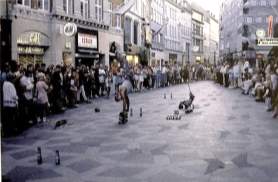

Image N: Stroget, Copenhagen. The street performers have their own code of behaviour to keep events
organised.
Source: Gehl, J and Gemzøe, L 2004.
Image M: KLCC Park, Kuala Lumpur. A huge park that offer variety of outdoor activities that open for public.
5.2 Making improvements in public space
There is a possibility to demolish the buildings and extend the roads which will unlikely lead to increasing the used of vehicles and lead to bad traffic. It is true that there is no strong reason of why buildings cannot be demolish as at some certain point, it bring benefits towards the residents by providing more open space. In addition, a possible linkages should be created in order to ensure the safety of pedestrians to cross the road and even streets and sidewalks can be redesigned into multipurpose public space that are more welcoming, and attractive. Often landscape area in most of cities not making any effort to improve the existing conditions of green area. Thus, the existing area could be restructured to expand the green space and turned into more attractive space. Most of the public provided adequate sitting area like, plaza, parks, markets, kiosk that located on the sidewalks is should not be destroy and it is important to preserve the area and to improve them as the “Only when opportunities for sitting exist can there be stays of any duration. If these opportunities are few or bad, people just walk on by…” (Gehl,J 2001).14 As mentioned above, safety in public space are the main important key to attract people towards public space at any time of the day. Public spaces can be dangerous if it used by “wrong” people and this will lead to people feel unsafe to be in public space. Artificial lighting must be adequate to lighten up all of the area especially in the streets and alleys. When the area is poorly maintained, the area will become dark, feel dangerous to access. Some people will be more attracted towards a public space that offer variety kind of activities and events and attractive layout rather than a space that lack of interest.
_____________________
J KLCC Park, Kuala Lumpur. A huge park that offer variety of outdoor activities that open for public, KLCC Park (Vivien, 2017) https://www.tripadvisor.com.au/LocationPhotoDirectLink-g298570-d7226070-i264190856-KLCC_Park Kuala_Lumpur_Wilayah_Persekutuan.html
K Stroget, Copenhagen. The street performers have their own code of behaviour to keep events organised. (Gehl, J and Gemzøe, L, 2004, p.69)
14 Gehl, J, Life Between Buildings, Using Public Space. The Danish Architectural Press, 2001.
The area can have diverse and interesting activities that take place at different times depending on the weather and seasons. Jane Jacobs once described a successful public place such as park in a city which many of them are unsuccessful as they have the same design approach. Jane Jacobs also mentioned about a successful park with “Mixture of uses of buildings [which] directly produces for the park a mixture of users who enter and leave the park at different times.They use the park at different time from one another because their daily schedules differ. The park thus possesses an intricate sequence of uses and users”. 14 Another situation like in downtown area where a lot of people will go there during lunchtime but it is unsafe to go there during evening and night time and what keeps this area continuously safe and lively people still used the space but in particular time only. Huge park area is important for socializing and it offers people to in engage with different kinds of people. However, a small public spaces, sometimes is even more lively due to the mix of commercial, housing and office buildings in active most of the time.
6. Final: Recommendations and Reflections
Now we know that the design approach, planning and creating public space is very important towards the city and people. Every public space has its own features and use. Each design cannot be simply derivative and plugged into another just because the design criteria and its functions is successful in that particular area. This is totally not a solutions in creating attractive public space and can results in unsuccessful use of the space. It is must be carefully shaped by considering the type of the society lifestyle, their needs and usage, and also the surroundings context. Besides, the complexity lies not only on creating and designing but preserving the public space is the ultimate description itself. Public spaces also offer great economic, cultural and social values in giving back the uniqueness of cities and enhancing the way of life of its residents and offer a lot more ventures for new experiences. Copenhagen is a city centre that the traffic has been soothed. Although the car traffic still can be found in most destinations but mostly the car traffic is in reasonable balance with pedestrian and bicycle traffic. By this means, Copenhagen has enhanced its uniqueness and the city centre has turned to be a lovely and peaceful city. Furthermore, a sidewalks, plaza, park, and an open market are capable of offering a lot more than what they look like. It is also a places where people could move, gather, talk, sit, nap and eat, and where the places that whipping with vitality and life, and this is what we called places for people. People who had the opportunity to live in city should enjoy the environments, preserve, use it wisely and live in it. Certain things once missing are hardly irreparable. It is almost impossible to turn back, and no matter how many replacement have been made a such as a huge park area into a shopping malls, from open outdoor markets to supermarkets, and from low rise buildings with friendly neighbourhoods into high rise apartment buildings with which hardly to communicate with neighbours. It is too late to save or restored what has been lost. In the future, we need to always read, observe, learn and participate to what we can do to create a stability between those that try to destroy them and those who work to preserve public spaces. There are so many methods that we can express our feelings towards public spaces in order to save them and there is always a way to improve the environments and humanize the city itself. It is not enough to only love the city we live in, but the society must work to keep the city.
_____________________
14 Jacobs, J. (1989). The Death and Life of Great American Cities. Random House.
Bibliography
Douglass, M, “Livable Cities: Conviviality Versus NeoDevelopmentalism in Pacific Asia’s Urban Future”. Presentation at International Conference on Hanoi – A Liveable City for All, Hanoi, 1-2 July 2009.
Gehl, J, Life Between Buildings, Using Public Space. The Danish Architectural Press, 2001.
Gehl, J and Gemzøe, L, Public Spaces – Public Life, Copenhagen. The Danish Architectural Press & The Royal Danish Academy of Fine Arts School of Architecture Publishers, Copenhagen, 2004.
Jacobs, J. (1989). The Death and Life of Great American Cities. Random House.
Lang, J. (1994). Urban Design: The American experience. New York, Van Nostrand Reinhold Co.
Jacobs, J. (1989). The Death and Life of Great American Cities. Random House.
Peñalosa, E, Speech at International Mayors’ Forum, 10-11 November 2004.
Ryan, Z, The good life, new public spaces for recreation. Van Alen Institute, New York, 2006.
UNESCO, Growing up in an Urbanising World. Louise Chawla, Ed. 2002.
Image Reference
Tittle page image: Gehl, J and Gemzøe, L, 2004, Public Spaces – Public Life, Copenhagen. The Danish Architectural Press
Image A: Asia Web Direct, 2018, Jalan Bukit BIntang, Kuala Lumpur, 8 January 2018, < http://www.kuala-lumpur.ws/klareas/jalan-bukit-bintang.htm>
Image B: Gehl, J and Gemzøe, L, 2004, Public Spaces – Public Life, Copenhagen. The Danish Architectural Press
Image C: Gehl, J, 2001, Life Between Buildings, Using Public Space. The Danish Architectural Press, Image D: Gehl, J and Gemzøe, L, 2004, Public Spaces – Public Life, Copenhagen. The Danish Architectural Press
Image E: Gehl, J and Gemzøe, L, 2004, Public Spaces – Public Life, Copenhagen. The Danish Architectural Press
Image F: Gehl, J and Gemzøe, L, 2004, Public Spaces – Public Life, Copenhagen. The Danish Architectural Press
Image G: Gehl, J and Gemzøe, L, 2004, Public Spaces – Public Life, Copenhagen. The Danish Architectural Press
Image H: Lim, J, 2015, Jalan Bukit Bintang the street that never sleeps, 19 December 2015,
Image I: Gehl, J and Gemzøe, L, 2004, Public Spaces – Public Life, Copenhagen. The Danish Architectural Press
Image J: Kosu,2015, Bukit Bintang and Jalan Alor food street, 14 October 2015, <<http://kosublog.com/en/malaysia-brunei-day2-3-1509/>
Image K: John, 2002, Merry Christmas, 28 December 2002, <https://www.askbjoernhansen.com/2002/12/24/merry_christmas.html>
Image L: Pritchett,S 2015, Melaka: Jonker’s street night market, 22 July 2015, <http://stephentravelteach.blogspot.co.uk/2015/07/melaka-jonkers-street-night-market.html
Image M: Vivien, 2017, KLCC Park, 2 July 2017, <https://www.tripadvisor.com.au/LocationPhotoDirectLink-g298570-d7226070-i264190856-KLCC_Park Kuala_Lumpur_Wilayah_Persekutuan.html>
Image N: Gehl, J and Gemzøe, L, 2004, Public Spaces – Public Life, Copenhagen. The Danish Architectural Press
Cite This Work
To export a reference to this article please select a referencing stye below:
Related Services
View allRelated Content
All TagsContent relating to: "Civil Engineering"
Civil Engineering is a branch of engineering that focuses on public works and facilities such as roads, bridges, dams, harbours etc. including their design, construction, and maintenance.
Related Articles
DMCA / Removal Request
If you are the original writer of this dissertation and no longer wish to have your work published on the UKDiss.com website then please:




